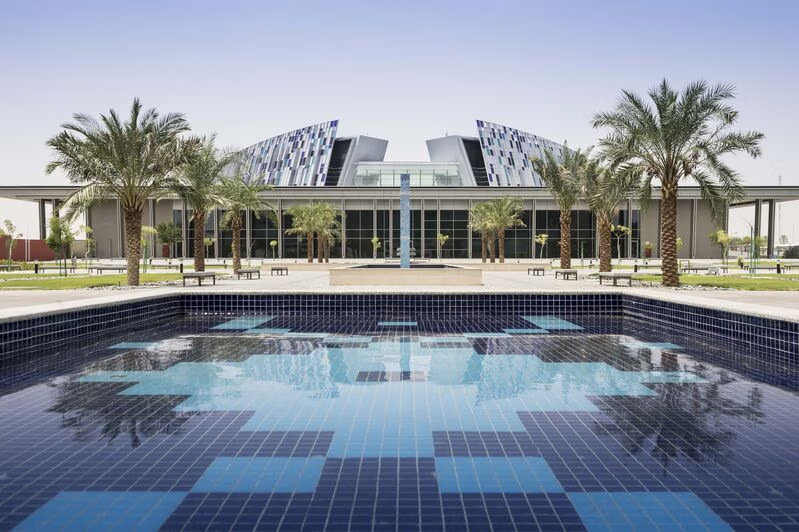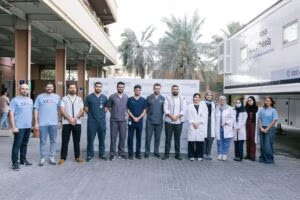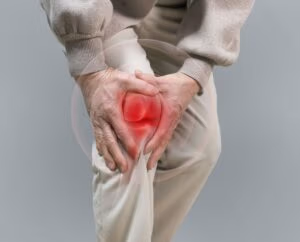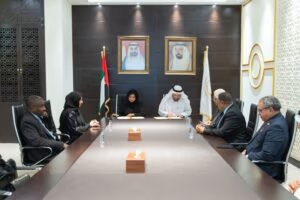The National Space Science and Technology Center at the United Arab Emirates University has completed all environmental and technical test phases for Arab Satellite 813 at its Assembly, Integration and Testing facility in Al Ain, marking a significant milestone in enhancing the UAE’s in-house capabilities in satellite assembly, testing, and operations.
Conducted entirely using national infrastructure and Emirati expertise, the test campaign confirms the Centre’s readiness to perform comprehensive qualification activities to international standards, supporting the UAE’s long-term sustainability in the space sector. The satellite has also successfully passed its Launch Readiness Review and Operational Readiness Review, validating full preparedness for launch and reliable in-orbit operations.
The environmental tests simulated the extreme conditions of launch and space. These included thermal vacuum testing, exposing the satellite to temperature cycles from -173°C to 127°C; vibration testing along 3D axes to assess structural integrity; and mass properties testing to ensure accurate mass and centre-of-gravity measurements. All tests were carried out by specialised Emirati engineers using high-precision equipment in a controlled environment.
The Flight Readiness Review confirmed that the satellite, launch vehicle, and ground systems are fully prepared, while the Operational Readiness Review validated the readiness of the ground station and mission operations teams. These achievements follow a complete Assembly, Integration and Testing campaign conducted at NSSTC by certified UAE engineers and technicians under Airbus supervision, marking the first full spacecraft qualification of this scale at the facility.
The Centre noted that the project aims not only to achieve technical success but also to build a sustainable national base of expertise. Extensive training programmes with leading partners have strengthened national capabilities in design, assembly, and testing, ensuring long-term knowledge transfer and the growth of a specialised local space industry.
In addition to environmental tests, functional tests for the satellite and its payload were conducted entirely in-house. Locally designed and manufactured mechanical ground support equipment was used, reflecting progress in developing an integrated national industrial ecosystem to support the UAE’s space sector.
The successful Flight Readiness Review and Operational Readiness Review also highlight growing national expertise in satellite development and operations. Following launch, the Al Ain team will lead all mission control activities.
As a flagship initiative under the Arab Space Cooperation Group, Arab Satellite 813 has contributed to knowledge exchange and expanded opportunities for Arab engineers and students. The project demonstrates the UAE’s leadership in fostering regional space cooperation and building sustainable national capabilities in space science and technology.
Arab Satellite 813 carries advanced payloads enabling high-resolution hyperspectral imaging to support environmental monitoring and data-driven decision-making in areas such as natural resource management, vegetation monitoring, air and water quality assessment, climate impact studies, and disaster response.
It is the first collaborative satellite project among Arab states, initiated under the directive of His Highness Sheikh Mohammed bin Rashid Al Maktoum, Vice President and Prime Minister of the UAE and Ruler of Dubai, who announced it as a gift to the Arab Space Cooperation Group at the signing of the Arab Space Cooperation Charter.
Developed by the National Space Science and Technology Center in collaboration with member states, the satellite will advance scientific research through environmental mapping, monitoring natural phenomena, analysing land cover dynamics, assessing crop conditions, and tracking water bodies. It will also support studies on land erosion, soil contamination, mining impacts, and broader climate-related changes. The mission represents a strategic step toward establishing a sustainable Arab space ecosystem driven by local talent and advanced research.
(Inputs from WAM)





